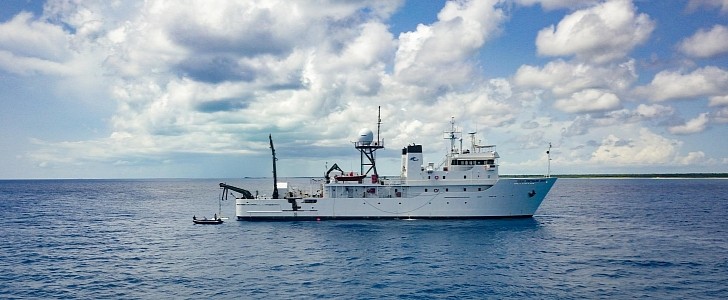It’s been said many times that the depths of our planet’s oceans are just as mysterious as outer space. Much of that is still unreachable, but every small step in that direction is progress. A team of researchers got to explore for the first time the epicenter of one of the most powerful earthquakes that ever took place in Japan.
In 2011, an earthquake with a magnitude of 9.0 to 9.1 swept over Japan, causing a tsunami that impacted the Fukushima Daiichi nuclear power plant. It’s known as the Great East Japan Earthquake, and its epicenter (45 miles/72 km east off the Japanese coast) had never been explored until recently.
A bold team of researchers completed a two-month expedition for the pioneering exploration of the Ryukyu, Izu-Ogasawara, and Japan ultra-deep ocean trenches, Newsweek reports. Members of the Japanese maritime science community teamed up with researchers at Caladan Oceanic & EYOS Expeditions and with ocean explorer Victor Vescovo, who is also a former U.S. Navy officer.
They took on the bold task of exploring these long and narrow “incisions” into the seafloor. But their goal wasn’t to find out more about the earthquake itself but about the forms of life that are specific to these trenches – a fascinating topic in itself.
Caladan Oceanic’s main expedition vessel is called DSSV Pressure Drop. A mammoth 224-foot (68 meters) ship built in 1985 in Tacoma, Washington, this floating research platform can carry up to 47 guests onboard.
It became what it is today two decades ago after being purchased by NOAA (the National Oceanic and Atmospheric Organization). Caladan Oceanic bought it in 2017 and refitted it, upgrading not only its scientific capabilities but also its comfort levels. Boasting a true explorer range of more than 15,000 nautical miles (17,261 miles/27,780 km), the Pressure Drop is also fitted with a manned submersible for conducting deep-water missions, such as this one.
A bold team of researchers completed a two-month expedition for the pioneering exploration of the Ryukyu, Izu-Ogasawara, and Japan ultra-deep ocean trenches, Newsweek reports. Members of the Japanese maritime science community teamed up with researchers at Caladan Oceanic & EYOS Expeditions and with ocean explorer Victor Vescovo, who is also a former U.S. Navy officer.
They took on the bold task of exploring these long and narrow “incisions” into the seafloor. But their goal wasn’t to find out more about the earthquake itself but about the forms of life that are specific to these trenches – a fascinating topic in itself.
Caladan Oceanic’s main expedition vessel is called DSSV Pressure Drop. A mammoth 224-foot (68 meters) ship built in 1985 in Tacoma, Washington, this floating research platform can carry up to 47 guests onboard.
It became what it is today two decades ago after being purchased by NOAA (the National Oceanic and Atmospheric Organization). Caladan Oceanic bought it in 2017 and refitted it, upgrading not only its scientific capabilities but also its comfort levels. Boasting a true explorer range of more than 15,000 nautical miles (17,261 miles/27,780 km), the Pressure Drop is also fitted with a manned submersible for conducting deep-water missions, such as this one.











